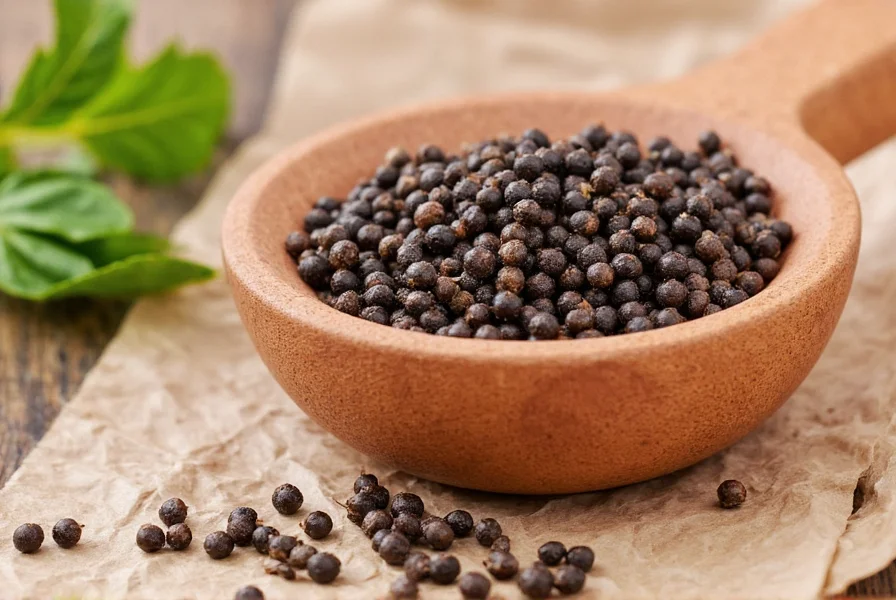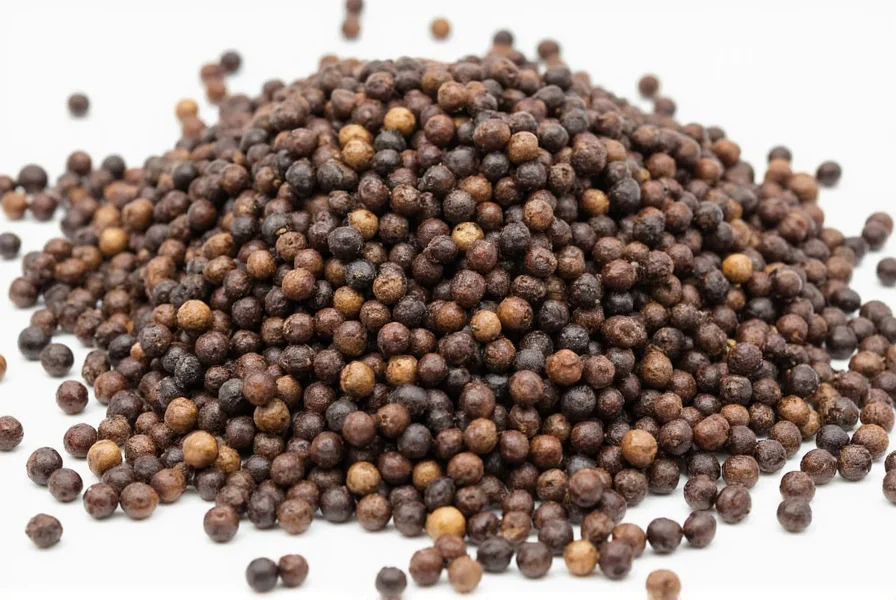10 Spicy Secrets About Black Black Pepper You Never Knew (But Definitely Should!)
Table of Contents
- Introduction: The King of Spices?
- A Bit of History: From Ancient Spice Route to Modern Pantry
- The Science Behind the Burn: Why Does It Tingle?
- Beyond the Table: Creative Ways to Use Black Black Pepper
- Buying Guide: How to Choose the Best Black Black Pepper
- Storing Tips: Keep Your Pepper Fresh and Fiery
- Debunking Myths: Separating Fact from Fiction
- Pairing Like a Pro: Flavor Combinations That Pop
- Cooking with Confidence: Recipes That Showcase Peppercorns
- Fun Facts: Did You Know These Peppery Pearls?
- Conclusion: Pepper Up Your Life!
Introduction: The King of Spices?
If you had to choose one spice that's as essential as salt in every kitchen, black black pepper would be the clear winner. Known as the "King of Spices," it’s been a staple across cuisines for centuries. But how much do you really know about this tiny powerhouse? Let’s take a deep dive into the wonderful world of black black pepper — where history meets flavor, and science meets sensation.
A Bit of History: From Ancient Spice Route to Modern Pantry
Black black pepper wasn’t always so easy to find. In ancient times, it was worth its weight in gold — literally. Roman traders traveled thousands of miles to get it from India, and during the Middle Ages, it was even used as currency. Talk about value!
The main source of black black pepper has historically been the Malabar Coast of India, known today as Kerala. The plant, Piper nigrum, grows as a vine and produces berries (called peppercorns) that are harvested at different stages depending on the type of pepper desired — green, white, or black.
| Type of Pepper | Processing Method | Flavor Profile |
|---|---|---|
| Green Pepper | Unripe berries, sun-dried or pickled | Fresh, grassy, herbal |
| White Pepper | Ripe berries, soaked to remove outer shell | Mellow, earthy, less pungent |
| Black Pepper | Partially ripe berries, sun-dried | Spicy, sharp, robust |
The Science Behind the Burn: Why Does It Tingle?
What gives black black pepper its signature bite? The answer lies in an alkaloid compound called **piperine**. Unlike capsaicin (the heat in chili peppers), piperine doesn't cause actual burning — instead, it activates pain receptors in a way that creates a spicy, tingling sensation.
Here’s what happens:
- Piperine binds to TRPV1 and TRPA1 receptors in your mouth — these are the same ones triggered by chili peppers and garlic.
- This causes a mild irritation that we interpret as heat.
- Unlike chili-induced spiciness, pepper’s kick tends to fade faster but lingers longer on the palate.
Beyond the Table: Creative Ways to Use Black Black Pepper
You don’t have to limit black black pepper to just shaking over pasta or steak. Here are some surprising and delicious uses:
- In Baking: Try freshly cracked pepper in chocolate desserts — especially truffles or brownies. It enhances the richness and depth of dark chocolate.
- With Fruit: A sprinkle of pepper elevates fruit flavors — try it on watermelon, mango, or pineapple.
- In Cocktails: Muddle a few whole peppercorns into drinks like Bloody Marys or citrus-forward gin cocktails.
- In Coffee: A dash of pepper can reduce bitterness and add warmth to brewed coffee.
Buying Guide: How to Choose the Best Black Black Pepper
Not all black black pepper is created equal. When shopping, here’s what to look for:
1. Whole vs Ground
- Whole peppercorns retain their potency and aroma much longer than pre-ground versions.
- Use a manual grinder or mortar and pestle for best results.
2. Origin Matters
- Indian Malabar: Earthy, balanced, and complex — ideal for everyday use.
- French Voatsiperifery: Rare and floral, great for finishing dishes.
- Brazilian Tellicherry: Bold and robust, perfect for meats and hearty stews.
3. Organic vs Conventional
- Organic options are generally grown without synthetic pesticides, which is better for both health and environment.
4. Packaging Tips
- Look for air-tight containers or vacuum-sealed bags.
- Avoid transparent containers; light degrades flavor over time.
| Product | Origin | Flavor Profile | Best For |
|---|---|---|---|
| Tellicherry Black Pepper | India | Rich, bold, woody | Grilling, roasting, soups |
| Vietnamese Premium Grade | Vietnam | Clean, slightly citrusy | Sauces, dressings, seafood |
| Madagascar Voatsiperifery | Madagascar | Earthy, floral, wild | Fancy finishes, cheese boards, desserts |
Storing Tips: Keep Your Pepper Fresh and Fiery
To keep your black black pepper tasting its best:
- Store in a cool, dry place away from direct sunlight.
- Use whole peppercorns within 1 year; ground pepper within 6 months.
- Never store in the fridge — moisture will ruin the flavor.
Debunking Myths: Separating Fact from Fiction
Let’s set the record straight on some common misconceptions about black black pepper:
- Myth: Pepper and chili pepper are related.
- Fact: Not true! Pepper comes from a flowering vine (Piperaceae family), while chilies come from nightshades (Solanaceae family).
- Myth: Pepper is just a filler spice.
- Fact: Far from it! Piperine enhances the absorption of nutrients like curcumin, making pepper a functional ingredient.
- Myth: More pepper means more flavor.
- Fact: Overuse can overwhelm a dish. Start small and adjust to taste.
Pairing Like a Pro: Flavor Combinations That Pop
Want to elevate your cooking? Try these dynamic duos:
- Black Pepper + Lemon: Brightens up fish, chicken, and vegetables.
- Black Pepper + Parmesan: Perfect on pasta, risotto, or roasted veggies.
- Black Pepper + Vanilla: Adds complexity to ice cream, custards, and cookies.
- Black Pepper + Cacao: Enhances the depth of chocolate-based desserts.

Cooking with Confidence: Recipes That Showcase Peppercorns
Ready to put your knowledge to the test? Here are three easy recipes to wow your taste buds:
- Cracked Pepper Steak: Marinate ribeye steaks with olive oil, garlic, and a hefty amount of crushed peppercorns. Sear and rest — serve with béarnaise sauce.
- Pepper-Infused Oil: Heat extra virgin olive oil with whole peppercorns until fragrant. Strain and drizzle over grilled bread, pizzas, or salads.
- Spiced Chocolate Truffles: Melt dark chocolate, stir in cream, then mix in a pinch of fine black pepper. Roll into balls and dust with cocoa powder.
Fun Facts: Did You Know These Peppery Pearls?
Let’s wrap things up with some trivia to impress your friends:
- Black black pepper was once called “black gold” because of its high value.
- In ancient Rome, pepper was stored like treasure in special rooms called “piperaria.”
- The scent of black pepper is often used in aromatherapy to stimulate alertness and focus.
- The world’s most expensive pepper is the rare Sarawak white pepper from Malaysia — priced at $500 per pound!
Conclusion: Pepper Up Your Life!
Whether you’re a seasoned chef or a curious home cook, understanding the nuances of black black pepper can transform your meals from bland to brilliant. With its rich history, powerful chemistry, and endless culinary applications, there’s no reason not to keep this humble spice front and center in your kitchen.
So next time you reach for the pepper mill, remember: you're not just seasoning your food — you're adding a touch of tradition, science, and a lot of flavor.











 浙公网安备
33010002000092号
浙公网安备
33010002000092号 浙B2-20120091-4
浙B2-20120091-4